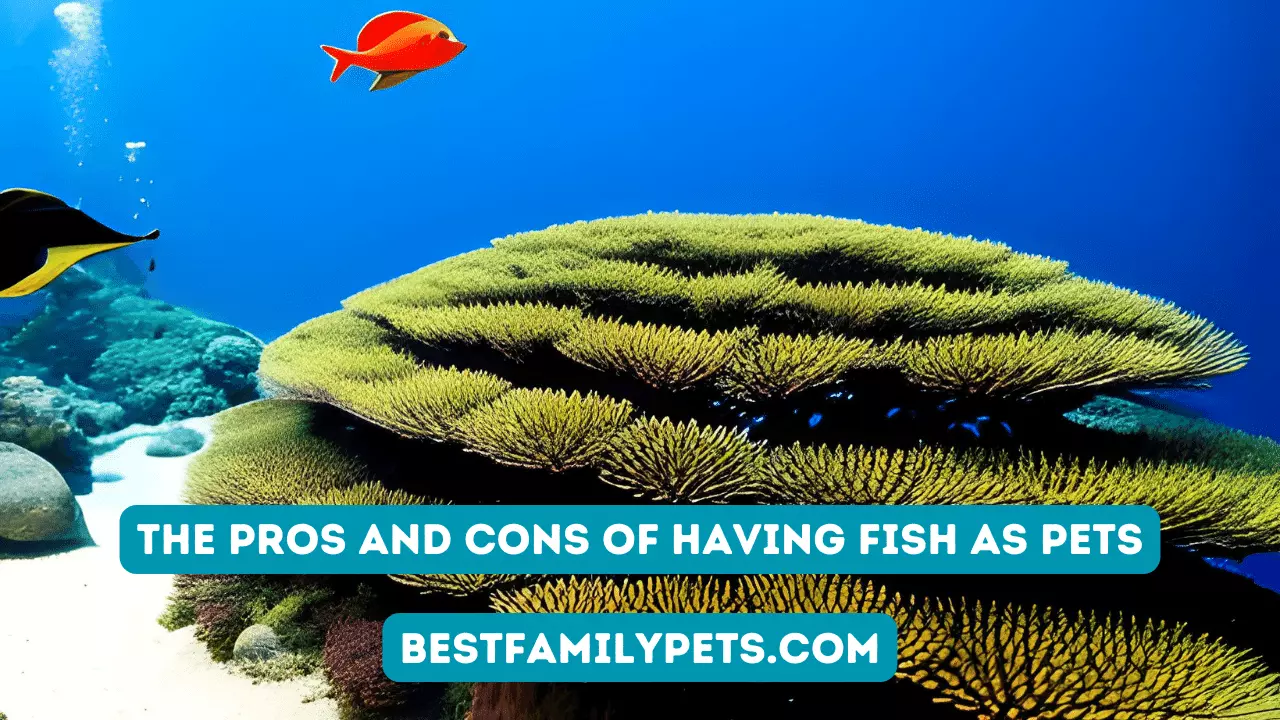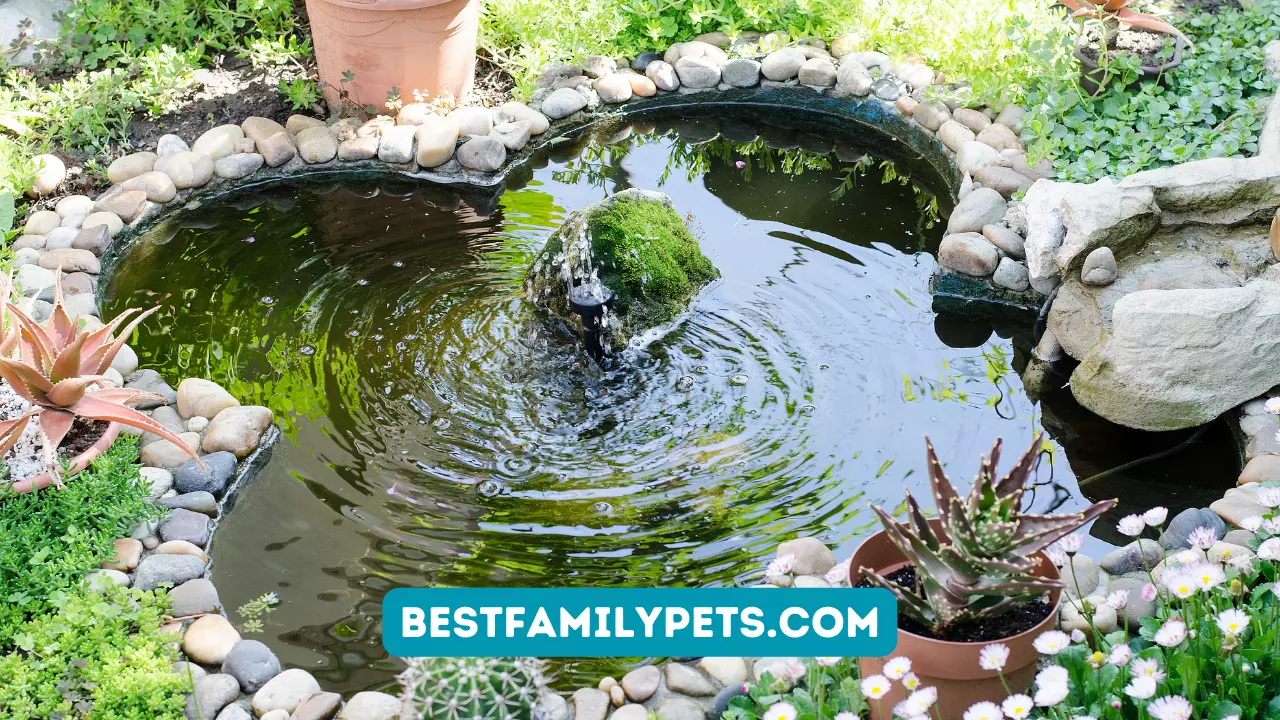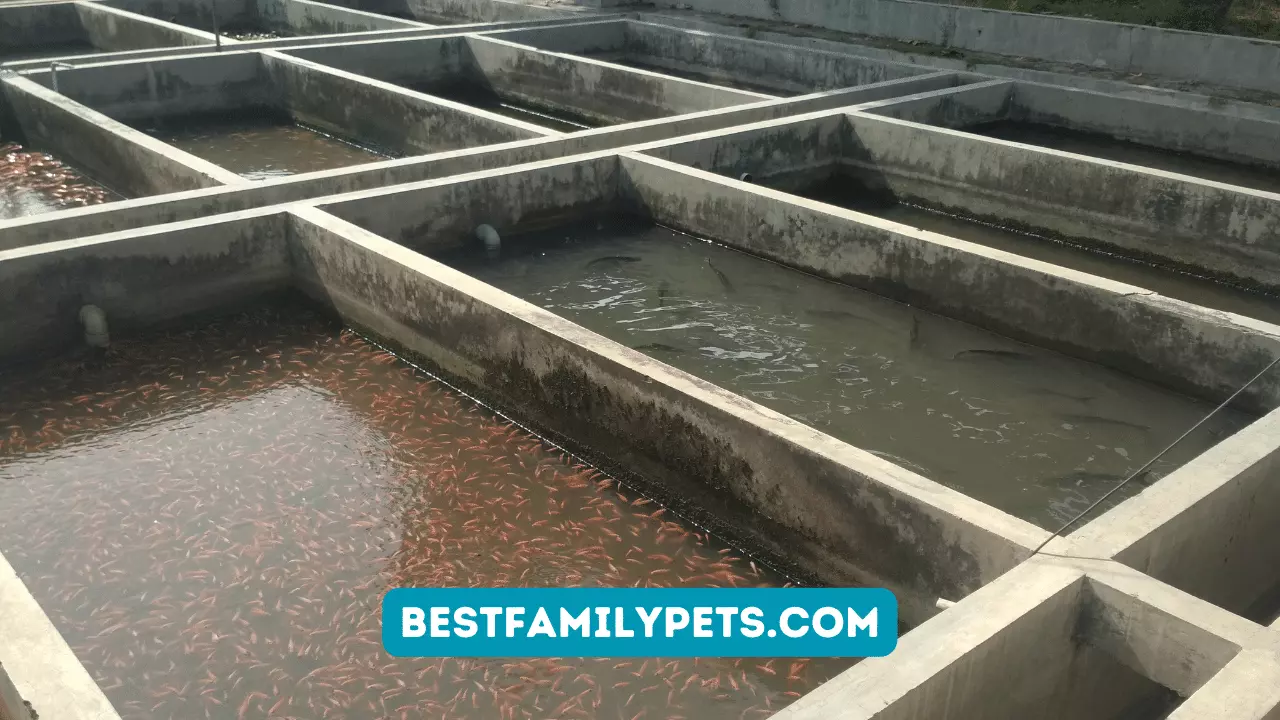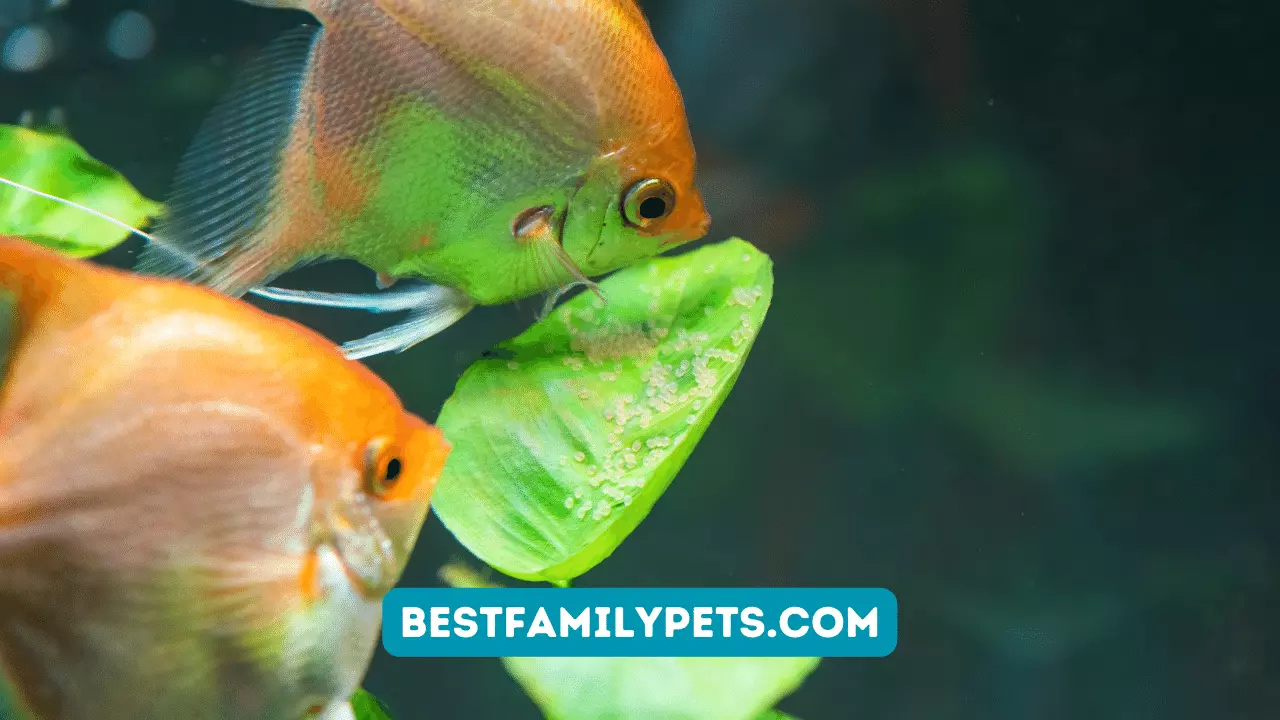Fish Tank Filters: Which is the Best of 2023?
Keep your fish tank clean and healthy with our top-rated filters for 2023. Browse our selection and order now for crystal clear water!
Do you need information about filters for fish tanks? Are you determined to set up a small aquarium at home and do not know where to start or what advice to follow to buy the best products? You have come to the right place! Below you have a very complete guide to know which are the best filters for fish tanks on the market.
We are going to summarize what types of filters for fish tanks there are, how they work, how they are cleaned or which are the most effective according to your fish tank. It is very important that you choose a good filter for the aquarium, since it will be responsible for eliminating waste and toxic elements that could cause health problems for your fish or plants. Do not miss this article!
The most important
- Fish tank filters are one of the key and most important parts of the aquarium. They are the ones that will make our fish and plants healthy.
- In general, filters for fish tanks can be of two types: external aquarium filters and internal filters, depending on where the filter body is placed, whether inside or outside the aquarium. There are different models of each of them.
- To buy the best filters for fish tanks, factors such as the actual volume of the fish tank or the number of fish that we will have and the pumping flow of the filter must be taken into account. We will see it in depth in the last section, dedicated to the purchase criteria.
The best filters for fish tanks on the market: our favorites
To ensure that your fish tank always looks like the first day and the fish enjoy their ecosystem, you need a good filter that guarantees its cleaning and conservation. Here is a list with the best filters for fish tanks on the market based on factors such as their quality, their price or that they are in the top sales. Attentive to our ranking !
- The best-selling fish tank filter
- The ideal filter for fish tanks for its value for money
- The cheapest fish tank filter
- The best high-end internal filter for fish tanks
- The most efficient internal filter for fish tanks
The best-selling fish tank filter
This aquarium filter is the best seller and not without reason. In fact, it has 4.2 out of 5 stars and its price is one of the most applauded features among users. It is a filter for aquariums with a capacity between 10 and 40 liters.
It has a practical device for extraction and is very easy to place using suction cups. It has 3 power positions and an outlet to oxygenate the aquarium. You’ll love it!
The ideal filter for fish tanks for its value for money
This filtration system for fish tanks is one of the preferred by online users . And it is not surprising because it is one of the ones with the best value for money.
It is also a filter that promotes the circulation of water in the aquarium or fish tank. It is indicated for containers between 18 and 76 liters. It has three filtering systems and has no less than 70% of 5-star ratings. Don’t let it escape!
The cheapest fish tank filter
A model of filters for external backpack type fish tanks and very economical. The AquaClear filtration system uses the full potential of the filter, so that it ensures the full use of its volume.
Its design promotes the recirculation of water and allows an easy exchange of its components. Buyers claim that it hardly emits noise.
The best high-end internal filter for fish tanks
It is not suitable for all budgets, but it is certainly of great quality despite being high-end. The measurements of this external filter are 19.3 x 29 x 37.6 cm and it weighs 2.9 kilos. The external Fluval 06 series has a good performance and there are several models: for aquariums up to 200 liters, 300 or up to 400 liters.
The buyers of this filter assure that it hardly makes noise, highlighting its quality and mechanical, biological and chemical filtering capacity.
The most efficient internal filter for fish tanks
It is a model of internal filter for aquariums from 30 to 60 l. The pickup concept is about ease of cleaning and assembly: the filter container with the sponge can be removed from above and the pump unit remains inside.
The performance of the pump is 150 to 300 liters per hour, with a consumption of 4 watts. Its measurements are 20.9 x 15.4 x 8 cm.
Buying Guide: Everything You Should Know About Fish Tank Filters
As we are sure that you have a lot of questions before choosing and buying tank filters, we are going to try to answer the most common ones. Remember that its main function is to simulate the recirculation of water. Otherwise, the water in a closed aquarium would remain stagnant and motionless. We start at the beginning!
What are filters for fish tanks and what advantages do they have?
The filters for fish tanks are the devices that are going to be in charge of recirculating the aquarium water and keeping it clean. For this, their job will be to filter the potentially toxic chemical components that accumulate due to the biological activity of fish and plants, fish food or medicines, among others. Some of its advantages are:
- They remove impurities from the water, improving the quality of life of fish and plants.
- They help oxygenate the aquarium water avoiding bad odors and the suffocation of the fish.
- They can generate water currents and many species of fish love this sensation of whirlwind or fast water.
- They are easy to clean, generally every fifteen days, and if they are properly maintained, they will last a long time.
- You can choose between several models, external or internal, so that they adapt as much as possible to the size of your aquarium, its capacity and the activity of your fish.
How do fish tank filters work?
The main function of filters for fish tanks is purifying, they avoid the presence of elements in suspension in the water and most work by hydraulic pump. Usually they are made up of a water inlet, a suction pump, a chamber or basket with the filter layers and the water outlet.
In the simplest models there is no chamber or basket, and the filter materials are directly in contact with the water. How is the step by step in its operation?
- Step 1: The aquarium water enters the filter. It is dirty because, with the passage of time, and the activity of fish and plants, it contains solid particles (food, plant and other debris) and harmful chemicals (ammonia, nitrites)
- Step 2: The water reaches the filter head, where the water suction pump is located, and passes through the tube system.
- Step 3: The water reaches the basket or chamber in which the different filter materials are located, of various types: the mechanical filter (which retains solid particles), the biological filter (which transforms ammonia and nitrites into nitrates) and, finally, the chemical filter (if there is one, which is not in all models) for greater cleaning of the water.
- Step 4: Once purified, the clean water is returned to the aquarium.
Are internal or external tank filters better?
The internal or internal filters are housed inside the tank, submerged in the same water, leaving the cable and its plug outside. The external or external filters are installed outside the tank. External filters are much more complete, while an internal filter is a good option if you don’t need a lot of filtering power.
When to use filters for external fish tanks?
Filters for external fish tanks are recommended for medium or large freshwater tanks (from 70 or 100 liters), in which we need to recirculate many liters of water or in which many fish and plants will live. In general, it is advisable to use them in almost any aquarium from 70 liters. They are most effective with cleaning.
When to use filters for internal fish tanks?
If the tank is small, the internal filters will suffice. In very small aquariums, it is not advisable to use internal or external filters with too much power. The filter flow is probably too strong and creates water currents. If we have a slightly larger aquarium, but with very few fish, internal filters are also better.
What types of filters for external and internal fish tanks are there?
Once we have clear the main distinction, and when both are recommended, we will now talk about some of the most popular filters for external and internal fish tanks. Here are the models with some of their main characteristics so that you can distinguish them and choose the one that best suits your fish tank or aquarium:
Types of filters for internal fish tanks:
- Filters for sponge fish tanks: The simplest. A foamex sponge (filter material) will be in charge of performing a very basic mechanical filtration. They are used in small aquariums with quarantined fish, fingerlings, prawns or a very small number of fish.
- Filters for box, corner or biobox fish tanks: Another basic filter, but with the capacity to place more types of filter material. It is installed in a corner, fixed with suction cups to the glass. Ideal for small aquariums or with a very small quantity of fish.
- Aquarium indoor fish tank filters: The most complete internal filter and one of the most used in home planted aquariums. Very practical and silent. With a motor head that is responsible for circulating the water through the filter and a basket that contains all the filter material. There are models made for large aquariums up to 200 liters.
- Plate fish tank filters: This internal filter model is placed under the substrate of the fish tank and is the least used because of the discomfort that this generates every time it has to be moved or cleaned. In addition, the roots of the plants can collapse it if they are deep.
Types of external fish tank filters:
- Outdoor fish tank filters: Highly recommended for medium to large aquariums (from 100 to 700 liters). They need a significant space on the furniture that the fish tank is on.
- Water tank or backpack filters: It is an external filter for a fish tank that hangs on one of the walls of the aquarium on the outside, with the water absorption hose and the outlet cascade inside. It oxygenates the surface of the water very well and allows the inclusion of various filter materials, but its effectiveness is not good in aquariums planted with more than 200 liters.
- Fish tank filters “canister”: This filter is totally separate from the tank. There are models of great power and with great filtering capacity.
How to clean the filters for fish tanks?

Fish tank filters need regular maintenance to remove accumulated debris and continue to function well. It is advisable to clean the internal filters every two weeks and the external ones once a month. In addition to this, there are logical warnings such as when there is a decrease in the output flow or the engine is very noisy.
- The first thing is to disconnect them from the current and remove them from the water (internal).
- Remove dirt and impurities without using soaps or detergents.
- Sponges and materials are rinsed with the aquarium water to avoid damaging the beneficial bacteria in the filter, and are changed once a year.
- If the filter has activated carbon, it must be replaced by a new one every month.
Purchase criteria
We have looked at the most popular types of fish tank filters, external and internal, and have answered the most frequently asked questions that may arise with this product. After this review, we analyze the main purchase criteria by which you should guide yourself when choosing the filter that you are going to install in your fish tank. Pay attention to:
- Fish tank volume
- Quantity of fish
- Filter capacity and pump flow
- Filter materials
Fish tank volume
Fish tank filters should remove three to four times the volume of the aquarium per hour. If the number of fish is very large, even more. For example, in a 30-liter aquarium, the filter should have a flow rate of at least 90 to 120 liters per hour. eye! The actual volume of water in a fish tank is not that of the urn. It is the water that fits once it is assembled.
Quantity of fish
Another important factor when choosing a filter for fish tanks is to be clear about the population of fish that will live in the aquarium and their type of diet. There are foods that pollute more than others. Also if we are going to have deciduous plants, or that lose their leaves frequently. In short: the biological load that must be metabolized.
Filter capacity and pump flow
The best thing to do is to find a filter that holds enough filter material to properly clean the fish tank and to house the bacteria colonies that will be part of the aquarium’s nitrogen cycle. It must be balanced and in proportion to the pump flow: amount of water that moves and material to clean it.
Filter materials
Filter materials are the layers of different material placed consecutively inside the filters for fish tanks. They are responsible for cleaning dirty water by retaining solid particles or transforming harmful substances in the water before returning it clean to the aquarium.
In addition, they are home to billions of beneficial bacteria that are responsible, for example, for converting ammonia and nitrites into nitrates. As a curious fact: for these bacteria to have a high concentration, it must take between four and six weeks since the first fish are added to the aquarium. The filter is said to be “ripe” there.
Aquarium filtration can be mechanical, biological or chemical depending on the layers of filtering material that the filter carries and their proportion. This ratio will depend on whether it must retain many suspended particles (greater mechanical filtration), metabolize nitrogenous waste (biological) or condition the water (chemical).
What type of filter materials do each filtration in the filters for fish tanks?
The type of material used to filter fish tanks is key to their durability. Therefore, it is necessary that you be clear about its classification, which we offer you below:
- Mechanical filtration is generally carried out by foam or foamex sponges with pores of different thickness, or by perlon wool for aquariums (much denser).
- For biological filtration , a porous material (such as clays) is used in which beneficial bacteria are housed. It is usually sold in the form of ceramic beads or sintered quartz spheres.
- Chemical filtration is not essential. The materials are activated or activated carbon, acidifying peat mosses or absorbent resins. It is used to change some parameter of the water, such as hardness or pH, or to remove certain elements from the water such as medicines.
- Activated or active carbon works like a natural sponge and gives the water a very characteristic clean appearance.
Summary
As a final conclusion, we will say that if you have a medium or large fish tank, it is preferable that you invest a little more in a good external fish tank filter. In addition to being easier to install and clean, it will ensure the perfect health of your fish and plants. It is preferable to buy a filter with greater benefits than not to stay in the simplest ones.
Throughout the article you will have seen that there are different types of filters for fish tanks, each with its characteristics and indicated for a type of fish tank, mainly depending on the size and quantity of fish that inhabit it. If you are going to start with few fish, but in the short term you want to expand the family, keep this in mind!
-

How Long Do Clownfish Live | A Complete Guide
Discover the lifespan of clownfish in captivity and the wild. Learn about their habitat, diet, and tips to increase their lifespan. A comprehensive guide for aquarium enthusiasts and marine life lovers. Clownfish are one of the most beautiful saltwater fish in the warm waters of the Pacific region. Clownfish are scientifically known as Amphiprioninae. They…
-



What Species Would Be the Best Betta Tank Mates?
Choosing the Best Betta Tank Mates can be tricky! This guide explores peaceful fish, shrimp, & snail options to create a harmonious community tank.
-



Discover the Unique Charm of Plakat Betta Fish: A Comprehensive Care Guide
Unveil the beauty & personality of Plakat Betta Fish! This comprehensive guide covers everything from their unique needs to proper care, tank setup & more.
-



The Pros and Cons of Having Fish as Pets
Considering fish as pets? Weigh the pros and cons with our comprehensive guide. Learn about the aquatic pets.
-



Keeping Fish in Your Garden, the Top Tips
Transform your garden into a serene underwater paradise! Learn the top tips for keeping fish in your garden pond. Click here to get started.
-



The Role of Aquatic Plants in Your Garden Pond Ecosystem
Discover the importance of aquatic plants in creating a thriving garden pond ecosystem. Learn and enhance your pond’s natural beauty today!
-



Common Problems to Avoid When Keeping Fish in Your Garden
Ensure your garden fish thrive with our expert tips on avoiding common problems. Create a healthy and happy environment for your aquatic pets!
-



DIY Pond Building Tips for Beginners
Build your dream pond with our easy-to-follow DIY tips. Perfect for beginners, start your project today and create a stunning aquatic feature!
-



Choosing the Right Fish for Your Garden Pond
Bring life to your garden pond with the perfect fish species. Learn more to find the right fish to create a vibrant aquatic environment.
-



The Benefits of Having a Pond in Your Garden
Transform your garden with a beautiful pond and experience the benefits of a serene outdoor oasis. Explore our pond options and start today!
-



Dwarf Frogs in the Aquarium
Discover the beauty of Dwarf Frogs in your aquarium! Learn about their care, diet, and tank requirements. Click here to get started.
-



What Should You Know Before Keeping Fish?
Ready to dive into the world of fishkeeping? Learn what you need to know before getting started to ensure your success.














